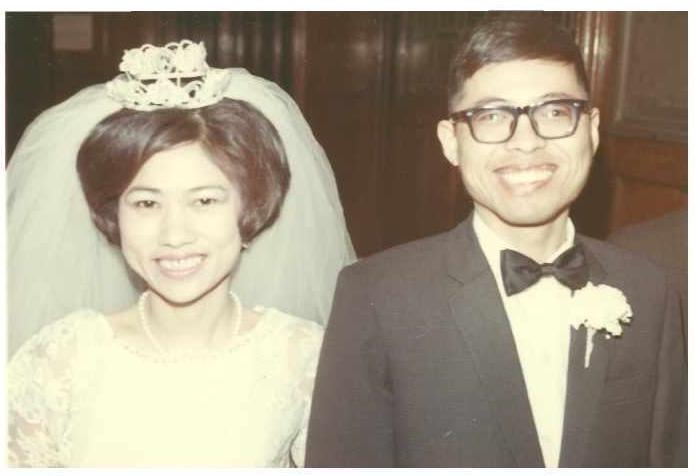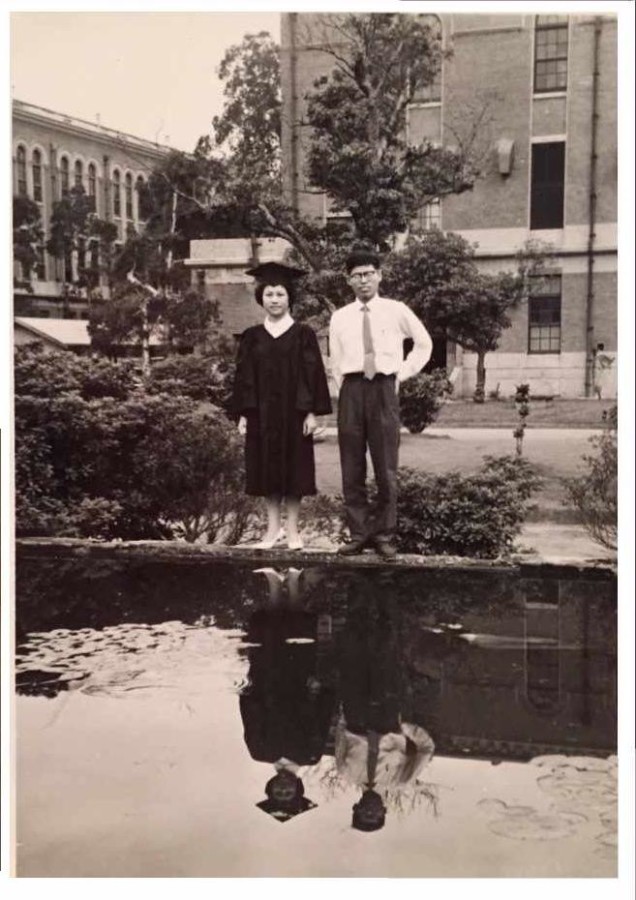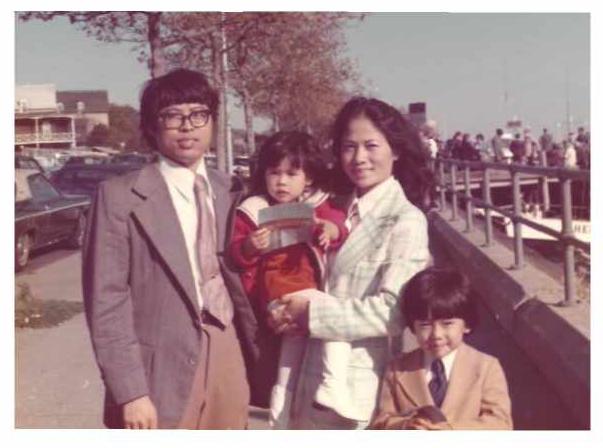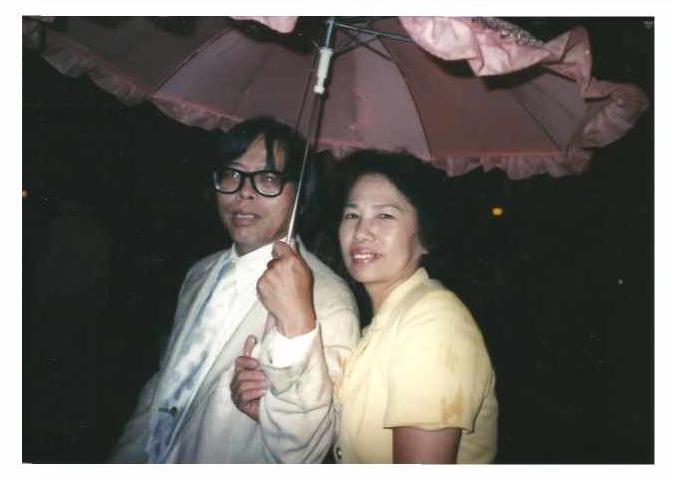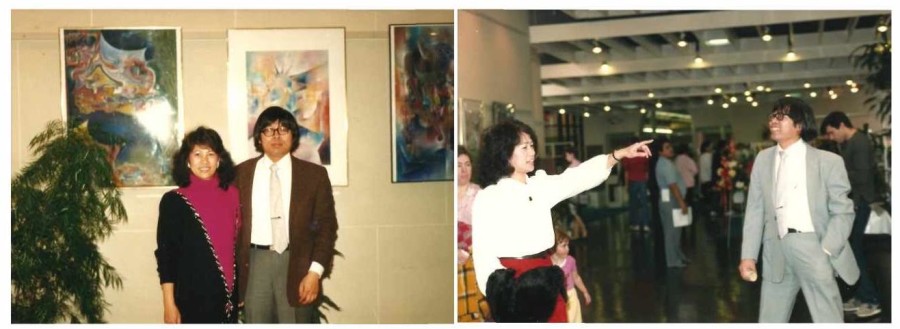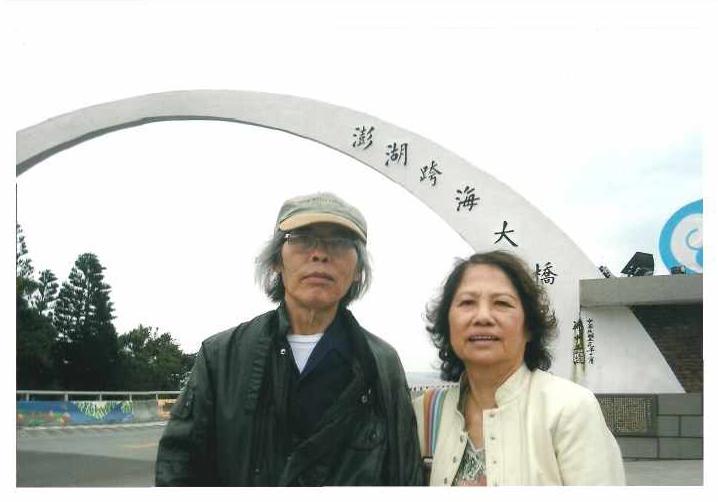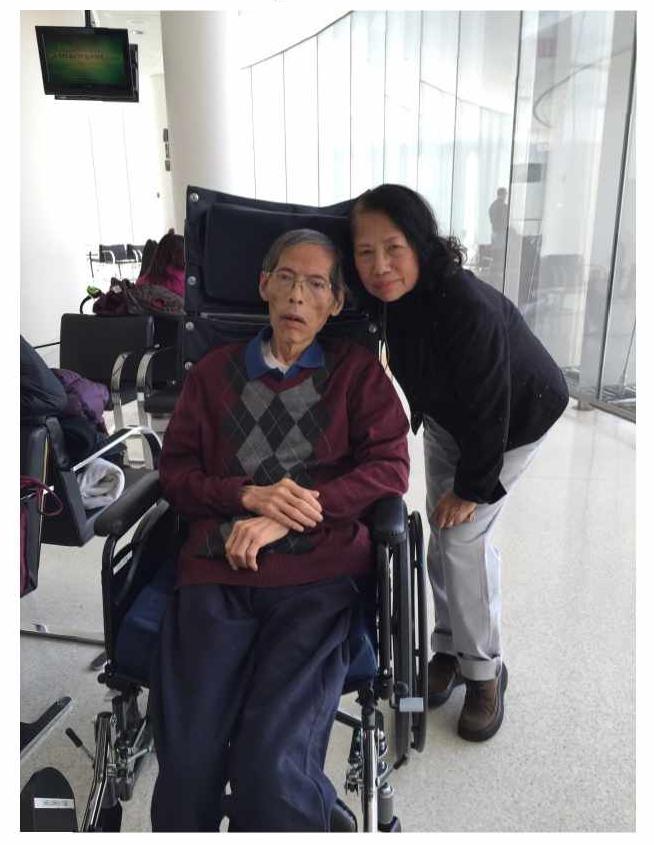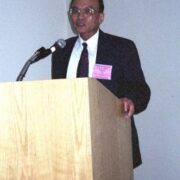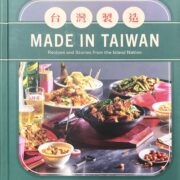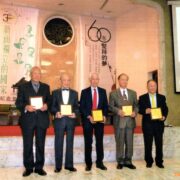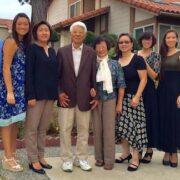The Life Story of Dr. Jia-Rhon Chen 陳家榮醫師
by Mrs. Chun-Ying Chen 陳黃春英
]ia-Rhon lived a very colorful life; there is so much to say about him, but I should be brief. He was passionate and energetic in his college years, confident and dominant as he matured, kind and compassionate at old age. He always left a strong impression with people who came in contact with him by his unconventional appearance, striking perception, insights and visions. What he had achieved made him a legendary figure.
I am fortunate to have been with him for 47 years. Actually I have known him for 57 years. Furthermore, my first glimpse of him was 69 years ago.
The first time I saw him was when I was a first grader in elementary school in Pun-Fu, a place composed of 64 small rocky islands, located in the Taiwan Strait between China mainland and Taiwan. One day, our class teacher told us that there was a child genius in the other class who was invited to come to draw for us. A small boy with eyeglasses walked in and went to the blackboard, picked up three color chalks, quickly drew a rooster and a tiger, then walked out. The second time I saw him was when I was a Freshman in college. My roommate Yu Yu Chen told me about a poster of Tai-Ta Art Club posted around the campus, and we went to check it out. Sitting in the temporary classroom, I saw a group of Seniors pushing a Freshman up the platform, then announcing him as the new president of the club. That was in 1958. Later he told me and other people that he told the Seniors if the girl in the yellow sweater signed up to join the club, he would be willing to be the club president. At the time, I thought it looked very strange, but the Seniors rushed to urge me to fill the membership form. After 10 years of uneasy courtship, we were married in 1968.
With the generous gift from God, Jia-Rhon worked extremely hard and persisted in everything he undertook, at studies, at painting, and at work. He graduated No.1 from Taichung First High School, so was picked by National Taiwan University Medical College without taking the entrance examination. Teachers in different subjects fields believed that he would achieve greatness in the fields they taught, but he ended up just being a comfortable medical student, spending his energies in all kinds of activities, including art, music, and dance, etc.
I graduated after four years of college, taught at Kaohsiung girls High School for a semester, then came to the US in February 1963, for graduate studies. He stayed to finish Medical School in 7 years, one year military training, and two years of residency medical training. He came to the US in 1967, and we were married in New York City in 1968.
He had to repeat Internship training in US. It was intense and very busy, but he was very happy and excited. He sketched people riding the subways, we visited museums. The colors of his paintings became vibrant. He began to inject the element of movement, sense of time, the third dimension into his paintings. The style of his works changed, the subject matters widened. He wished to have more time for everything. One day, he came home with a fever. He had only one piece of watercolor paper left from the pad he brought with him from Taiwan, he cut it into four pieces, and painted four paintings. One of them still hangs in our kitchen; it is the first painting of his “Lovers Series”.
Alex and Lisa were born in our Bronx apartment. Our babysitter said she had never seen a father so good with their children. Not only did he help take care of the children, he was also the cook for dinner. I was sick and weak in those years at Bronx. After dinner, he would take Alex for a walk to the Fordham Road shops. Alex would tell the store clerks, “My mother is tired, she stays home with my sister.” After he became an attending physician at Brooklyn VA Medical Center in 1973, I took a leave of absence without pay from Westchester Community College, but did not go back.
Since I was not working, I had time to think about showing his art works. Even though he was very busy, he continued to produce. Besides his “Lovers Series,” he painted “Young Girl Series,” “Flower Series,” “Joy of Life”(family portrait), “New York scenes” – subjects dear to him. We thought of entering competitions. First we went to the Washington Square Outdoor Show in Spring and Fall. In 1975 he was accepted to exhibit at Manhattan Art and Antique Center in Manhattan. At that show, he showed watercolor works, oil pastels, and oils. The owner of the Center named his style “Majestic Romanticism.” Subjects of these paintings were in floating movement, very beautiful. Many people visited the Center; as it was newly established, it had a lot of publicity. Hemingway’s daughter, Mariel, stepped in to our room. A few significant people and galleries left their name and contact addresses on our signature book, including the known pop art collector, Robert Scull. Unfortunately Mr. Scull soon passed away. With this show we were able to link with other galleries. But Jia-Rhon felt that he did not have enough art works to show to the world, so he did not rush out to make contact with them. Also, he never wanted to invest financially for his art. To provide for his family was his priority.
In 1980 he felt more comfortable about his collection and picked Lynn Kottler Galleries at Madison Ave. & 65th street for exhibition, because the known artist Magritte had exhibited there. One of his oil pastels was “The Bridge,” the Verrazano Bridge turns into a God-like figure, bridging Heaven to an earthly mother figure. 1984 was a very productive year, on account of two exhibitions, one at St. John’s University in New York, and the other at Apollo Gallery in Taipei. Encouraged by the curator of Dr. Sun-Yat Sen Gallery of St. John’s University, Mr. Ping-Nan Ho, he happily produced 60 pastels of Taiwan scenic paintings, the “Taiwan Suite,” in 6 months. Mr. Ho was truly impressed. The exhibition at St, John’s University lasted three months due to popular demand. His pastel work, “On the Beach,” won an Audubon artist award. 23 out of 25 paintings showed at Apollo Gallery in Taipei were sold. From 1984 to 1995 he would have one solo exhibition each year, either at professional galleries or at Taiwan museums, including Taipei Fine Arts Museum (two times), Taiwan Museum of Art, in Taichung, Tai Te Art Gallery (two times) in Taipei, Spring Gallery in Taipei, and G, Zen 50 Art Gallery in Kaohsiung.
In 1985, Mr. Wang, the well-known CEO of Formosa Plastic group, invited him to have a large exhibition at his Formosa Plastic Group Building. Mr. Wang told the guests at his dinner table: “Dr. Chen can do more than other doctors, because his art has the power of healing.” I believe he was talking about Jia-Rhon’s “Life Cycle Series,” large mural scale paintings about diseases and victory over diseases.
After 1995, Jia-Rhon switched his focus to New York; he was looking for places to exhibit his large scales paintings. After watching Wagner’s Ring Cycle opera, he wanted to extend his “Life Cycle” mural paintings outside of Taiwan. He already donated 12 large pieces of art works to all the major medical colleges, hospitals, and medical institutes in Taiwan, including the largest work, “Creation,” which stand three stories high and twenty feet wide at National Taiwan University Hospital in Taipei, Taiwan. In 1996, he donated the oil painting “New Hope” (6 feet x 20 feet) to Elmhurst Hospital in Queens, New York. He continued to look for suitable spaces. He had exhibitions again at professional galleries, in S0H0 at the Walter Wickiser Gallery in 2000, and at the Caelum Gallery in Chelsea in 2002.
Meanwhile he also devoted his time to the Formosa Chamber Music Society, which promoted young musical talents from Taiwan. He was the backbone of the Society. He wrote to his classmates for donation; he designed the posters and programs; he would bring FCMS concert programs everywhere he went to show to people (not his art). He painted the “Music Series.” He was interested in music in his college years, and he listened to WQXR for 40 years of commuting, driving from home to Brooklyn VA Medical Center and back, 20 miles each way. So he accumulated knowledge about classical music and had argued with Juilliard School professors about who was the greatest composer, and if high school students should be giving chance to have solo concerts at Weill Recital Hall, at Carnegie Hall. Formosa Chamber Music Society for 15 years held two concerts each year, promoting lots of Taiwanese young musicians, some in their high school years, some established music professors, as well as top international competition award winners.
Now I should talk about his medical endeavors. He was a neurologist after all. He always was a proud alumnus of National Taiwan University Medical College. Even when he was very ill, he talked of Tai-Ta, his alma mater, often. Although he divided his energies among other interests, he never failed a class or subject at medical school. (I understand it was very tough to study there.) He might have regretted that he did not spend more time in research and tackle some discovery or cure for some illness. He had specialty training in Pediatrics, in Internal Medicine, and in Neurology. He wrote only 2 or 3 papers, but they were accepted to the New England Journal. The topic about Paget Disease received international attention, as his conception had never been touched by others before. He had an unfinished paper about three hundred Parkinson cases; if it had been completed, it might be the largest case report on the topic.
His popularity among patients was obvious. We were often greeted warmly on the street by veterans, his former patients. They loved him and enjoyed his humor. They said he could be a very good comedian. I was the only employee in his private office. Very often, one patient was inside his consultation room, laughing loudly, while rest of the patients waiting outside would be impatient and jealously waiting for their turn. They went in with a sad face and came out smiling. There were lots of happenings, I regret not taking time and effort to write them down.
Jia-Rhon loved Taiwan very much. He painted his childhood scenes over and over. He has been active in the Taiwanese American Community. He always responded to Dr. Fang Sheng Lao’s invitation to do the Tzu-Chi Charity clinic, except the last time, because he was very ill. He cared very much about his patients, and they loved him.
A week before his passing, on Friday September 18, 2015, at 5 pm, the highly respected Priest De Hwa Chang baptized him, prayed for him and gave him anointment. Jia-Rhon said he was one of the luckiest men on earth, and he was. I am very lucky too, to have been with him for all these years.
I want to thank Miss Chen Yang for reaching out to the Catholic Church for him, so he could be accepted to the Savior and God’s kingdom. I want to thank all of you who come to bid him a final farewell. I want to thank all his schoolmates, his classmates and friends who cannot come today but send in their comforting words and thoughts. I also thank my children for their support. Kiyoshi, our grandson, for the past 5 months came with his mother, Michelle, every Sunday to cheer him up and comfort him at his sick bed. Thank you all again.
Jia-Rhon, we had a wonderful life together. Thank you for your great love and for your care. May you rest in peace. We will meet again in heaven.
源自 陳黃春英 2015/10

